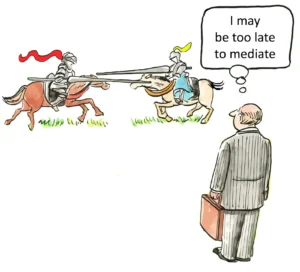Should I choose adjustment of status or consular processing for my green card application?
When pursuing permanent residency in the United States, applicants face a critical decision between adjustment of status and consular processing. This choice significantly impacts the timeline, costs, and overall experience of obtaining a green card. The fundamental difference between these two pathways lies in where the applicant completes the process: adjustment of status allows eligible individuals to apply while remaining within the United States, while consular processing requires application through a U.S. embassy or consulate abroad. Understanding the distinct advantages and limitations of each option is essential for making an informed decision that aligns with your specific circumstances and immigration goals.
Understanding Adjustment of Status
Adjustment of status represents the process through which eligible foreign nationals already present in the United States can apply for lawful permanent resident status without departing the country. This pathway to a green card offers significant advantages for those who qualify, particularly in terms of maintaining continuity in their U.S.-based lives and employment.
To qualify for adjustment of status, applicants must meet several fundamental requirements. First, they must be physically present in the United States at the time of filing. This physical presence requirement cannot be waived under any circumstances. Second, applicants must have made a lawful entry into the United States, typically evidenced by admission or parole by an immigration officer. A lawful entry generally means the individual entered with valid documentation, such as a visa, and had face-to-face contact with a U.S. immigration officer who acknowledged their entry. Importantly, even if the visa used for entry has since expired, the entry itself remains lawful for adjustment purposes.
The third critical requirement is having an immigrant visa immediately available. For immediate relatives of U.S. citizens (spouses, unmarried children under 21, and parents of U.S. citizens who are at least 21 years old), visas are always considered immediately available. However, for family preference categories and employment-based immigrants, visa availability depends on priority dates published in the monthly visa bulletin issued by the Department of State. Applicants in these categories must check the visa bulletin to confirm their priority date is current before filing for adjustment of status.
The Consular Processing Alternative
Consular processing offers an alternative pathway to permanent residency for individuals who are either outside the United States or ineligible for adjustment of status. This process involves applying for an immigrant visa through a U.S. embassy or consulate in the applicant’s home country or country of legal residence.
The consular processing journey begins with the filing of an immigrant petition by a qualifying sponsor, such as a family member or employer. Once this petition is approved by U.S. Citizenship and Immigration Services (USCIS), the case is transferred to the National Visa Center (NVC), which collects additional documentation and fees. When a visa becomes available and the documentation is complete, the NVC schedules an interview at the appropriate U.S. embassy or consulate. Following a successful interview, the applicant receives an immigrant visa valid for six months, allowing entry to the United States as a permanent resident.
Consular processing offers several distinct advantages. Processing times are often shorter than adjustment of status, with many cases completed within 6-12 months compared to the 8-14 months or longer typically required for adjustment cases. Additionally, the filing fees for consular processing are generally lower, starting around $1,200 compared to approximately $1,700 for adjustment of status. For applicants who are already outside the United States or who prefer not to wait in the U.S. during processing, consular processing represents the logical choice.
Eligibility Considerations for Both Pathways
Determining eligibility for either adjustment of status or consular processing requires careful consideration of several factors, including current location, immigration history, and the basis for seeking permanent residency. These eligibility factors often dictate which pathway is available to an applicant.
For adjustment of status, eligibility hinges primarily on three factors: physical presence in the United States, lawful entry, and visa availability. Applicants must be physically present in the U.S. when filing Form I-485 and must maintain that presence throughout the adjudication process. The lawful entry requirement means that individuals who entered without inspection (crossed the border without being admitted by an immigration officer) are generally ineligible for adjustment, with limited exceptions for certain protected categories like asylees or victims of trafficking. Additionally, applicants must maintain lawful status in the U.S. during the process, though certain immediate relatives of U.S. citizens may be exempt from this requirement.
Consular processing eligibility is generally broader, as it does not require current presence in the United States or maintenance of lawful status. However, applicants must still establish admissibility to the United States, meaning they are not subject to any grounds of inadmissibility under immigration law, such as certain criminal convictions, fraud, or prior immigration violations. Individuals who have accrued unlawful presence in the United States may trigger bars to reentry when they depart for consular processing, potentially requiring waivers before they can return.
The basis for seeking permanent residency also affects eligibility for both pathways. Family-sponsored immigrants, employment-based immigrants, diversity visa lottery winners, and humanitarian cases like refugees and asylees may all qualify for either adjustment or consular processing, provided they meet the specific requirements for their category. However, certain special immigrant categories may have pathway-specific eligibility criteria that limit their options.
Timeline Comparisons
The processing timeline represents a critical factor in choosing between adjustment of status and consular processing. These timelines vary significantly based on case complexity, visa category, and current processing backlogs at USCIS and consular posts.
Adjustment of status typically takes between 8-14 months for straightforward cases, though processing times can extend significantly longer for complex cases or during periods of high application volume. The process begins with filing Form I-485 with USCIS, followed by biometrics appointment, possible requests for evidence, and an interview at a local USCIS field office. Throughout this period, applicants remain in the United States, often with authorization to work and travel internationally if they’ve applied for employment authorization and advance parole.
Consular processing generally moves more quickly, with many cases completed within 6-12 months from the time the initial petition is approved. After NVC processing, which typically takes 2-3 months, cases are transferred to the appropriate consulate for interview scheduling. The time between NVC completion and interview varies by consular post, ranging from a few weeks to several months depending on local backlogs. Following a successful interview, visa issuance usually occurs within a week, allowing the applicant to travel to the United States and become a permanent resident upon admission.
It’s important to note that these timelines assume visa availability. For categories subject to annual numerical limitations, such as family preference or employment-based categories, waiting for a visa number to become available can add years to the overall process. This waiting period affects both adjustment and consular cases equally, as neither pathway can proceed until a visa number is available.
Cost Analysis and Financial Considerations
Financial considerations play a significant role in the decision between adjustment of status and consular processing. The direct filing fees, associated costs, and financial implications of each pathway differ substantially.
For adjustment of status, the current filing fee for Form I-485 is $1,225, which includes the biometrics fee. Most applicants also file for employment authorization (Form I-765) and advance parole (Form I-131) concurrently, which are currently free when filed with Form I-485. Additional costs include the required medical examination by a USCIS-designated civil surgeon, typically costing between $200-$500, and potential attorney fees for case preparation and representation. The total direct costs for adjustment of status generally range from $1,500-$2,500, excluding attorney fees.
Consular processing involves lower direct filing fees. The current fee for the immigrant visa application (DS-260) is $325, plus a $220 Immigrant Visa Processing Fee paid to the NVC. The USCIS petition filing fee (typically Form I-130 or I-140) is the same for both pathways. Consular processing also requires a medical examination, though costs vary significantly by country. Additional expenses include travel to the consular interview, which may involve international airfare, accommodations, and time away from work. These travel-related expenses can substantially increase the total cost of consular processing, potentially offsetting the lower filing fees.
Beyond direct costs, financial considerations include the ability to work during processing. Adjustment applicants can obtain employment authorization while their cases are pending, allowing them to work legally in the United States. Consular processing applicants generally cannot work in the U.S. until they enter with their immigrant visa, potentially resulting in lost income during processing. This income differential can be a decisive factor for many applicants, particularly those with established employment in the United States.
Travel Restrictions and Flexibility
The ability to travel internationally during the green card application process differs significantly between adjustment of status and consular processing, creating important considerations for applicants with international ties or business requirements.
Adjustment of status applicants face potential travel restrictions during the pendency of their applications. Without advance parole, departing the United States while an adjustment application is pending is generally considered an abandonment of the application. To maintain travel flexibility, most adjustment applicants file Form I-131 for advance parole concurrently with their Form I-485. Once approved (typically within 3-5 months), advance parole allows international travel without abandoning the adjustment application. However, certain nonimmigrant visa holders, particularly those in H-1B, H-4, L-1, or L-2 status with valid visas, may travel without advance parole under the dual intent doctrine, though this approach carries some risk and should be discussed with an immigration attorney.
Consular processing applicants face fewer travel restrictions within their home countries but may encounter challenges traveling to the United States during processing. While awaiting consular processing, applicants remain outside the U.S. and can generally travel freely within their country of residence or internationally. However, entering the United States during consular processing typically requires a valid nonimmigrant visa, which may be difficult to obtain once immigrant intent has been demonstrated through an immigrant visa application. Consular officers may deny nonimmigrant visa applications based on presumed immigrant intent, limiting the applicant’s ability to visit the U.S. until the immigrant visa is issued.
For individuals with significant international travel requirements, the choice between adjustment and consular processing should carefully weigh these restrictions against their specific travel needs. Those who must maintain the ability to enter and exit the United States frequently during processing may find adjustment of status with advance parole more accommodating, despite the longer overall processing time.
Employment Authorization Considerations
The ability to work legally in the United States during the green card application process represents a significant consideration for many applicants, particularly those with established careers or job offers in the U.S.
Adjustment of status applicants enjoy a distinct advantage in terms of employment authorization. By filing Form I-765 (Application for Employment Authorization) concurrently with Form I-485, applicants can obtain an Employment Authorization Document (EAD) that permits work for any employer in the United States. These EADs are typically approved within 3-5 months and remain valid while the adjustment application is pending, with the possibility of renewal if necessary. This employment flexibility allows adjustment applicants to maintain or establish employment in the U.S. during processing, providing financial stability and career continuity.
Consular processing applicants generally cannot work in the United States until they enter with their immigrant visa and become permanent residents. This limitation can create significant financial and career challenges for individuals with existing or potential employment opportunities in the U.S. For those currently employed in the United States on nonimmigrant visas, choosing consular processing may require departing the U.S. and potentially interrupting or terminating their employment during processing. This employment disruption represents one of the most significant drawbacks of consular processing for applicants currently working in the United States.
For applicants with specialized skills or in high-demand fields, the employment authorization advantage of adjustment of status may outweigh other considerations. The ability to continue working or accept new employment opportunities during processing provides not only financial benefits but also career advancement possibilities that might otherwise be delayed or lost during consular processing.
Family Considerations and Dependents
Family circumstances significantly influence the choice between adjustment of status and consular processing, particularly for applicants with spouses and children who may be included in the immigration process.
For family-based immigration, both pathways allow for concurrent processing of eligible derivatives (spouses and unmarried children under 21). In adjustment of status cases, all eligible family members physically present in the United States can file Form I-485 concurrently, provided they each meet the eligibility requirements. This concurrent filing allows families to remain together in the U.S. throughout the process. Similarly, in consular processing, eligible derivatives can be included on the same petition and processed simultaneously at the same consular post, though each family member must attend their own interview.
The choice becomes more complex when family members are in different locations. If some family members are in the United States while others remain abroad, a decision must be made whether to pursue adjustment for those eligible while others undergo consular processing, or to have everyone process through consulates to maintain family unity during the process. This decision often depends on factors such as children’s education, employment opportunities, and family support systems.
For marriage-based green card applications where the relationship is recent, additional scrutiny may apply regardless of the chosen pathway. Both adjustment interviews and consular interviews involve questions to establish the legitimacy of the marriage. However, adjustment applicants benefit from the opportunity to attend the interview together with their U.S. citizen or permanent resident spouse, potentially facilitating the demonstration of a bona fide marriage. In consular cases, the U.S. citizen or resident spouse typically does not attend the interview, which may make establishing the relationship’s legitimacy more challenging in some cases.
Risk Assessment: Denials and Appeals
The consequences of application denial differ substantially between adjustment of status and consular processing, creating varying levels of risk that applicants should carefully consider.
Adjustment of status offers significant procedural protections in the event of denial. If USCIS denies an adjustment application, the applicant generally has the right to appeal the decision or file a motion to reopen or reconsider. In many cases, particularly for those maintaining lawful nonimmigrant status, a denial does not automatically trigger removal proceedings, allowing the applicant to remain in the United States and potentially pursue alternative pathways to permanent residency. Even for those placed in removal proceedings following denial, relief may be available through defensive adjustment before an immigration judge.
Consular processing carries greater risk in the event of denial. Consular officers have significant discretion in visa decisions, and there is generally no formal appeal process for immigrant visa denials. While applicants can request a review of the denial through administrative processes, these reviews are limited in scope and rarely result in reversal of the original decision. Additionally, applicants denied at the consular stage remain outside the United States, potentially separated from family members or employment opportunities in the U.S. for extended periods while seeking alternative solutions.
The grounds for denial also differ somewhat between the two processes. While both pathways apply the same substantive immigration law regarding admissibility, consular officers often exercise greater discretion in their decision-making. USCIS adjudicators typically provide detailed explanations for denials and may issue Requests for Evidence (RFEs) allowing applicants to address deficiencies before final decisions. Consular officers, by contrast, may issue denials with minimal explanation and limited opportunity to provide additional evidence, particularly in cases involving discretionary factors or suspected misrepresentation.
Special Considerations for Those with Immigration Violations
Individuals with past immigration violations face unique challenges when choosing between adjustment of status and consular processing, as these violations can significantly impact eligibility and outcomes.
For those who have accrued unlawful presence in the United States, consular processing triggers the application of reentry bars that would not apply to adjustment of status. Individuals who have been unlawfully present for more than 180 days but less than one year face a three-year bar to reentry upon departure, while those with unlawful presence exceeding one year face a ten-year bar. These bars automatically apply when the individual leaves the U.S. for consular processing, potentially requiring waivers that are difficult to obtain and significantly delay the process. By contrast, certain immediate relatives of U.S. citizens who entered lawfully can adjust status despite periods of unlawful presence without triggering these bars, as they do not need to depart the United States.
Those who entered without inspection face different challenges. Generally, individuals who entered the United States without inspection are ineligible for adjustment of status, with limited exceptions for certain protected categories or those who qualify under specific provisions like Section 245(i) of the Immigration and Nationality Act. For these individuals, consular processing may be the only option, despite the potential application of reentry bars requiring waivers.
Prior deportation or removal orders create additional complications. Individuals with outstanding removal orders who depart for consular processing may trigger reinstatement of those orders, potentially barring reentry for extended periods. Those with prior deportations may be inadmissible for five or twenty years, depending on the circumstances, requiring waivers before consular processing can proceed successfully.
Given these complexities, individuals with immigration violations should consult with an experienced immigration attorney before choosing between adjustment and consular processing. In many cases, the specific details of the violation, the applicant’s immigration history, and the basis for seeking permanent residency will determine which pathway offers the best chance of success.
Switching Between Pathways
Circumstances sometimes necessitate switching between adjustment of status and consular processing, but this transition involves specific procedures and potential complications that applicants should understand.
Switching from consular processing to adjustment of status is possible when an individual with a pending immigrant petition enters the United States legally on a nonimmigrant visa and becomes eligible to adjust status. This scenario might occur when someone initially outside the U.S. obtains a temporary visa, enters legally, and then decides to pursue adjustment rather than returning for consular processing. To effectuate this switch, the applicant must file Form I-485 with USCIS and notify the National Visa Center to request that they cease consular processing. Importantly, the applicant must have entered the U.S. with legitimate nonimmigrant intent; entering on a temporary visa with the preconceived intent to adjust status could constitute visa fraud and jeopardize the application.
Transitioning from adjustment of status to consular processing typically occurs when an applicant departs the United States without advance parole or becomes ineligible to adjust for other reasons. In such cases, the applicant can request that USCIS transfer the approved immigrant petition to the NVC to begin consular processing. This switch often results in significant delays, as the case must essentially restart in the consular processing pipeline. Additionally, departing the U.S. after periods of unlawful presence may trigger reentry bars that would not have applied to adjustment of status.
Both transitions involve administrative complexities and potential delays. The immigrant petition remains valid regardless of which pathway is pursued, but supporting documentation and procedures differ between the two processes. Applicants considering switching pathways should evaluate the potential timeline extensions, additional costs, and eligibility implications before proceeding with the change.
Current Processing Conditions and Backlogs
As of March 2025, processing conditions and backlogs for both adjustment of status and consular processing continue to evolve, influenced by policy changes, staffing levels, and application volumes at USCIS and consular posts worldwide.
USCIS is currently experiencing moderate processing delays for adjustment of status applications, with most field offices reporting processing times of 8-14 months for family-based cases and 10-16 months for employment-based cases. These timeframes represent improvements from the significant backlogs that developed during the COVID-19 pandemic but remain longer than pre-pandemic levels. Receipt notices are now typically issued within three business days of filing, and biometrics appointments are generally scheduled within 4-6 weeks. The agency has implemented various efficiency measures, including expanded electronic filing options and streamlined adjudication procedures for certain straightforward cases.
Consular processing timelines vary significantly by post, with some locations reporting efficient processing while others face substantial backlogs. The National Visa Center currently processes most cases within 2-3 months of receiving the approved petition from USCIS. However, interview scheduling timelines differ dramatically by consulate, with some posts offering appointments within weeks while others have backlogs extending several months. Applicants should research current conditions at their specific consular post when evaluating processing timelines, as these variations can significantly impact the overall consular processing experience.
Both pathways continue to be affected by visa availability issues for categories subject to annual numerical limitations. The March 2025 visa bulletin shows significant backlogs for family preference categories, particularly for applicants from high-demand countries like Mexico and the Philippines. Employment-based categories currently show more favorable conditions, with most categories current for all countries except China and India, which continue to face multi-year waits for certain preference categories.
Policy Considerations and Potential Changes
The immigration landscape remains subject to policy shifts that could impact both adjustment of status and consular processing procedures in the coming months and years. Staying informed about these potential changes is essential for applicants navigating the permanent residency process.
Recent policy discussions have focused on streamlining legal immigration pathways while implementing stricter enforcement measures at borders and ports of entry. These dual priorities could result in procedural changes for both adjustment and consular processing, potentially affecting processing times, documentation requirements, and adjudication standards. The administration has signaled interest in modernizing the immigration system through technology improvements and process efficiencies, which could benefit applicants in both pathways if successfully implemented.
Potential policy changes specifically affecting adjustment of status include revised medical examination requirements, with the December 2024 Form I-485 update now requiring concurrent filing of Form I-693 (medical examination) rather than allowing deferred submission. Additional changes may include expanded interview waiver criteria for certain low-risk adjustment applicants and enhanced electronic filing capabilities, both aimed at reducing processing times and backlogs.
For consular processing, policy discussions have centered on revising visa interview waiver programs, potentially expanding eligibility for interview waivers to reduce consular workloads and expedite processing for straightforward cases. AAdditionally, enhanced coordination between USCIS and consular posts has been proposed to facilitate more consistent adjudication standards and potentially allow for easier transfers between adjustment of status and consular processing when circumstances change. These coordination efforts could reduce redundancies in document submission and review, potentially shortening overall processing times for both pathways.
Monitoring policy developments through official government channels and reputable immigration news sources remains essential for applicants navigating either pathway. While speculation about future changes should not dictate current decisions, awareness of potential policy shifts can help applicants prepare for possible procedural adjustments that might affect their cases.
Making the Final Decision
When deciding between adjustment of status and consular processing, applicants should conduct a comprehensive assessment of their specific circumstances, weighing the various factors discussed throughout this analysis.
For individuals already legally present in the United States who qualify for adjustment of status, this pathway often provides significant advantages. The ability to remain in the U.S. with family members, maintain employment through work authorization, and benefit from more robust procedural protections makes adjustment of status particularly attractive for those who qualify. The higher filing fees and longer processing times may be reasonable tradeoffs for these benefits, particularly for those with established lives in the United States.
Consular processing generally proves advantageous for individuals outside the United States or those ineligible for adjustment of status. The typically faster processing times and lower direct filing fees make this pathway efficient for those without compelling reasons to remain in the U.S. during processing. Additionally, for individuals with certain immigration violations that would complicate adjustment of status, consular processing with appropriate waivers may represent the only viable path to permanent residency.
Consulting with an experienced immigration attorney before making this decision is highly advisable, particularly for cases involving complex immigration histories, potential grounds of inadmissibility, or family considerations. An attorney can provide personalized analysis based on the specific details of each case, identifying potential risks and advantages that might not be apparent through general research.
The choice between adjustment of status and consular processing represents one of the most consequential decisions in the immigration process. By carefully evaluating eligibility factors, timeline considerations, financial implications, travel needs, and family circumstances, applicants can select the pathway that best aligns with their specific situation and immigration goals. This informed decision-making approach maximizes the likelihood of a successful outcome while minimizing unnecessary complications in the journey to permanent residency.
Citations:
- https://www.deel.com/blog/adjustment-of-status-vs-consular-processing/
- https://www.usvisahelp.com/immigrant-consular-processing.php
- https://www.rosinalaw.com/blog/adjustment-of-status-vs-consular-processing/
- https://www.paultolandlaw.com/adjustment-of-status-vs-consular-processing-which-is-right-for-you/
- https://anwarilaw.com/immigration-services/green-cards/adjustments-of-status/benefits-applying-adjustment-status/
- https://immigrationhelp.org/learning-center/the-complete-guide-to-adjustment-of-status-process
- https://www.boundless.com/immigration-resources/green-card-consular-processing/
- https://citizenpath.com/adjustment-status-vs-consular-processing/
- https://www.boundless.com/immigration-resources/average-green-card-wait-times/
- https://www.immlawfl.com/blog/2024/12/how-could-american-immigration-laws-change-in-2025/
- https://www.akulalaw.com/blog/2023/july/adjustment-of-status-vs-consular-processing-what/
- https://www.rnlawgroup.com/adjustment-of-status-aos-vs-consular-processing-a-comprehensive-comparison/
- https://citizenpath.com/adjustment-of-status-green-card/
- https://immigrationhelp.org/learning-center/what-is-consular-processing
- https://www.boundless.com/immigration-resources/adjustment-of-status-vs-consular-processing/
- https://www.uscis.gov/green-card/green-card-processes-and-procedures
- https://www.greencardlawyers.com/greencards/ConsularProcessing/FAQsCPvsAOS.html
- https://isss.temple.edu/hosting-departments/information-departments/essential-information-departments/change-status-vs-consular-processing
- https://brownimmigrationlaw.com/immigration-memos/adjustment-of-status-vs-consular-processing-for-employment-based-immigration/
- https://www.greenbacktaxservices.com/blog/down-side-to-obtaining-a-green-card/
- https://www.reddit.com/r/USCIS/comments/1avyhqy/petitioning_parents_would_you_recommend/
- https://www.c-lawfirm.com/news/2024/july/adjustment-of-status-vs-consular-processing-unde/
- https://www.boundless.com/immigration-resources/green-card-benefits/
- https://legalservicesincorporated.com/immigration/family-immigration/what-are-the-advantages-and-disadvantages-of-applying-for-an-immigrant-visa-through-consular-processing-and-adjusting-status-to-permanent-resident-through-filing-an-i-485/
- https://www.irsstreamlinedprocedures.com/pros-and-cons-of-having-a-green-card/
- https://anwarilaw.com/immigration-services/green-cards/adjustments-of-status/consular-processing/consular-processing-vs-adjustment-status/
- https://immigration.dinsmore.com/resources/immigrant-visas/comparison-of-the-advantages-and-disadvantages-of-adjustment-of-status-versus-consular-processing
- https://www.h1b.biz/adjustment-of-status-within-the-united-states.html
- https://www.usa.gov/green-card-consular-process
- https://www.cliniclegal.org/file-download/download/public/67404
- https://www.uscis.gov/green-card/green-card-processes-and-procedures/adjustment-of-status
- https://www.uscis.gov/green-card/green-card-processes-and-procedures/consular-processing
- https://www.uscis.gov/green-card/green-card-eligibility-categories
- https://citizenpath.com/consular-processing-green-card/
- https://anwarilaw.com/immigration-services/green-cards/adjustments-of-status/eligible-file-adjustment-status-aos/
- https://www.ilrc.org/sites/default/files/resources/introduction_to_consular_processing83.pdf
- https://www.nolo.com/legal-encyclopedia/who-can-apply-green-card-through-adjustment-status.html
- https://international.globallearning.cornell.edu/alerts/guidance-possible-immigration-changes-2025
- https://www.whitehouse.gov/presidential-actions/2025/01/protecting-the-american-people-against-invasion/
- https://forums.immigration.com/threads/dv-2025-at-risk-due-to-presidential-election.348248/
- https://www.uscis.gov/working-in-the-united-states/temporary-workers/h-2b-non-agricultural-workers/temporary-increase-in-h-2b-nonimmigrant-visas-for-fy-2025
- https://publicpolicy.cornell.edu/events/immigration-reform-in-2025-what-is-possible/
- https://www.youtube.com/watch?v=q7ix_33ajBg
- https://immigrationforum.org/article/legislative-bulletin-friday-january-24-2025/
- https://travel.state.gov/content/travel/en/legal/visa-law0/visa-bulletin/2025/visa-bulletin-for-march-2025.html
- https://www.aila.org/library/impact-of-the-2025-congressional-budget-process-on-immigration
- https://travel.state.gov/content/travel/en/legal/visa-law0/visa-bulletin/2025/visa-bulletin-for-january-2025.html
- https://www.aila.org/library/daily-immigration-news-clips-march-13-2025
- https://www.uscis.gov/green-card/green-card-processes-and-procedures/visa-availability-priority-dates/when-to-file-your-adjustment-of-status-application-for-family-sponsored-or-employment-based-111
- https://reevesimmigration.com/services/consular-processing/
- https://www.akulalaw.com/blog/2024/february/exploring-the-benefits-and-advantages-of-adjustm/
- https://brownimmigrationlaw.com/resources-library/adjustment-of-status-vs-consular-processing-for-employment-based-immigration/
- https://www.boundless.com/immigration-resources/adjustment-status-process-explained/
- https://civilrights.org/wp-content/uploads/2024/08/Project-2025-Immigrants-Rights.pdf
- https://www.gtlaw.com/en/insights/2025/1/published-articles/5-trends-to-watch-2025-immigration-compliance
- https://economictimes.com/nri/migrate/us-visa-bulletin-for-april-2025-green-card-backlogs-deepen-india-faces-over-two-year-eb-5-retrogression/articleshow/118873523.cms
- https://www.jacksonlewis.com/insights/year-ahead-2025-immigration-issues
- https://www.boundless.com/blog/visa-bulletin/
- https://www.nycbar.org/reports/the-trump-administrations-early-2025-changes-to-immigration-law/




















